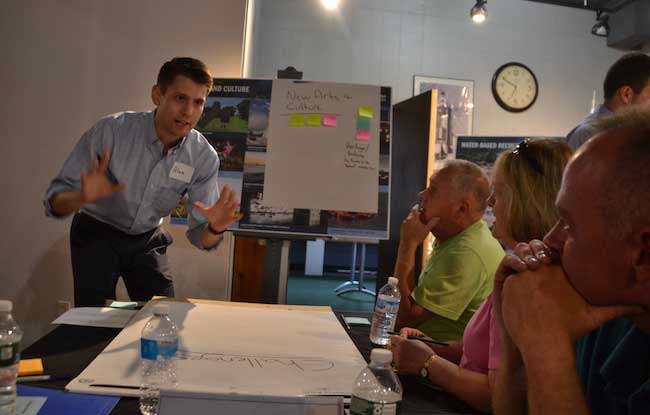Wanted: Ideas and vision to capitalize on Erie Canal
LOCKPORT – The Sate Canal Corp. wants to hear from residents in canal communities on how the state can better promote the canal to visitors and made the canal a better asset to local residents.
The Canal Corp. has scheduled a series of community engagement sessions to hear from residents. There was a meeting on Monday in Lockport, and there is another today in Brockport. (Click here to see the schedule of sessions.)
“This comes at a very exciting time,” Brian Stratton, director of the State Canal Corp.
The Erie Canal is celebrating an 8-year bicentennial of the construction from 1817 to 1825. Stratton says the Canal Corp. is developing a vision for the next century of the canal.
Gov. Andrew Cuomo last year announced the “Reimagine the Canals” initiative and two winners were picked from 145 entries in a $2.5 million competition.
One of the winners includes the Erie Armada, a group of boats passing along the canal carrying people tasting craft beers. That armada will be Sept. 20-22 at the Macedon Canal Park.

Brian Stratton, director of the State Canal Corp., said the state welcomes feedback to increase the impact of the canal in communities along the historic waterway.
The Canal Corp. also picked a plan to develop a pocket neighborhood in Canastota, turning open spaces and former industrial areas along the canal turned into space for housing and community space.
But the Canal Corp. wants more ideas and going to the canal communities for inspiration.
At the Lockport meeting, there were the following focus groups – Tourism, Parks and Public Spaces, Arts and Culture, Nature and Environment, Water Recreation, Local Business and Events and others.
About 60 people attended the session at the Challenger Learning Center.
State Assemblyman Mike Norris, R-Lockport, was among the officials at the meeting. He is pleased to see the state putting resources into the canal, and seeking feedback from the canal communities.

One of the ideas submitted includes using horse and buggy rides in canal towns.
The ideas at the sessions will be compiled by the Rockefeller Institute of Government and put into a report for the Reimagine the Canals Task Force. Former Lt. Gov. Bob Duffy, the current CEO of the Greater Rochester Chamber of Commerce is one of three co-leaders of the Task Force, with Duffy focusing on the western end of the canal.
The canal has changed from a commercial shipping hub in the 1800s to a recreational use today.
Some of the people at Monday’s meeting would like to see the canal develop heritage sites in each canal town, to help people understand and appreciate the history of the canal communities and the canal’s role in shaping them. That could include using bronze states, interpretive panels, murals and public arts projects to tell those stories.
Other ideas mentioned include:
• There is shortage of quality housing in many canal communities. Creating affordable and attractive living spaces should be a priority.
• There should be shuttle options on the canal. For example, if people take a kayak on the canal, they could then ride a bicycle back to the original destination.
• The canal is cleaner than in the past, but illegal dumping should remain a priority. Some people would like to see “fish ladders” to help fish travel in creeks and streams. Sometimes the canal is a barrier for fish in nearby creeks.
• More dining and lodging options needed along the canal.
• More festivals and events needed in canal towns.
• Making the canal more accessible to people with mobility challenges, and adding more handicapped accessible ramps for boats, canoes and kayaks.
• Some of the groups cited a lack of funding in making the projects a reality, and a difficulty in building consensus among local and state officials in what projects to pursue and then manage.










































































